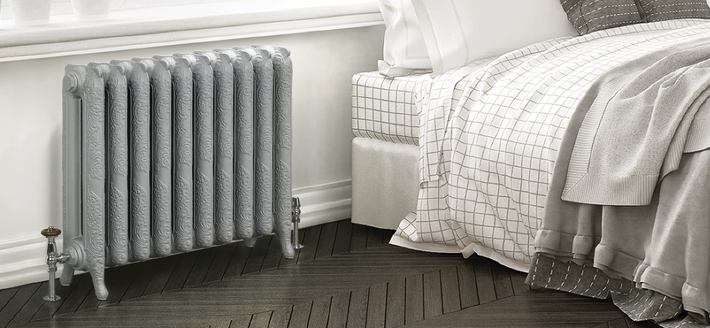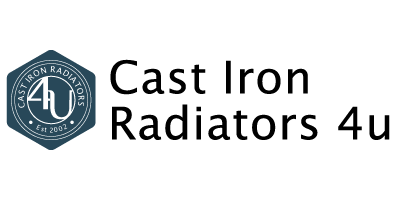How to Clean Cast Iron Radiators
Posted by Cast Iron Radiators 4u on 28th Mar 2025
Cast iron radiators are a stylish and efficient way to heat a home, providing warmth with a classic aesthetic. But to keep them functioning optimally and looking their best, regular maintenance is essential. Dust, dirt, and grime can accumulate in the crevices, gradually reducing their efficiency over time and detracting from their appearance. In this guide, we’ll walk you through the best way to clean a radiator so that it remains in excellent condition for years to come.
What Are Cast Iron Radiators?

Shop Low Level Cast Iron Radiators
Cast iron radiators have been a staple of home heating systems for over a century. They operate by circulating hot water or steam through their hollow sections, radiating heat efficiently. Unlike modern steel or aluminium models, cast iron radiators retain heat for much longer, even after you’ve turned your heating off. This makes them a highly energy-efficient heating solution.
They come in various styles, including ornate Victorian designs, sleek Georgian models, and modern interpretations. Cast iron radiators are a timeless addition to any home. However, despite their durability, regular radiator heating maintenance is necessary to keep them functioning at their best.
10 Essential Tools for Cleaning Cast Iron Radiators
Cleaning a cast iron radiator effectively requires a few of the right tools to ensure you remove dust, grime, and debris without damaging the radiator’s surface. Given their often intricate designs and multiple crevices, these radiators need a combination of appropriate tools and general cleaning supplies.
Before you start cleaning your cast iron radiator, here’s our list of what you’ll need to get the job done:
-
Radiator Brush: A long, flexible brush designed to reach between the columns and into the crevices, helping to remove dust and dirt from hard-to-reach areas.
-
Vacuum Cleaner With a Brush Attachment: Useful for removing loose dust and dirt before wet cleaning, ensuring a more thorough clean.
-
Microfibre Cloths: Ideal for wiping down surfaces without scratching or leaving lint behind.
-
Warm Water and Mild Detergent: Effective for removing grime without damaging the radiator's finish, ensuring a gentle yet thorough clean.
-
Soft-Bristled Brush or Toothbrush: Helps clean intricate details on ornate radiators, reaching small crevices that other tools may miss.
-
Bucket: To hold water and detergent for cleaning, making it easier to dip cloths and brushes as needed.
-
Towel or Absorbent Cloth: To dry the radiator thoroughly and prevent rust from forming due to moisture exposure.
-
Feather Duster or Static Duster: Useful for quick dusting in between deep cleans to maintain cleanliness and efficiency.
-
Protective Gloves: Helps to protect your hands from dust, grime, and any cleaning solutions used during the process.
-
Drop Cloth or Old Towels: Placing these beneath the radiator can catch any drips or debris, keeping your floors clean during maintenance.
The Best Way to Clean a Cast Iron Radiator
Keeping your cast iron radiator clean not only improves its aesthetic appeal but also enhances its heating efficiency. Over time, dust and dirt can accumulate on the surface and within the crevices, potentially reducing the radiator's ability to distribute heat effectively. But with regular maintenance, you can greatly extend the lifespan of your radiator while ensuring that it continues to operate at its best.
So, what are the best techniques for cleaning your cast iron radiators? Here’s our top tips:
Dust and Vacuum
Start by using a radiator brush or vacuum cleaner with a brush attachment to remove dust from the surface and between the columns. This is an essential step in home radiator maintenance, as accumulated dust can reduce heating efficiency.
Wipe with a Damp Cloth
Dampen a microfibre cloth with warm water and mild detergent. Wipe down the radiator to remove any remaining dust or dirt. For intricate designs, use a soft-bristled brush or toothbrush to clean small crevices.
Deep Cleaning for Stubborn Grime
For radiators with stubborn grime or grease, use a solution of warm water and mild soap. Dip the cloth or brush in the soapy water and scrub gently. Avoid using abrasive cleaners, as they may damage the finish.
Rinse and Dry
After cleaning, wipe the radiator with a clean, damp cloth to remove any soap residue. Dry thoroughly with a towel to prevent rust from forming.
Cleaning Behind the Radiator
Use a radiator brush or a vacuum extension to clean behind the radiator, where dust often accumulates. If possible, remove the radiator from the wall for a more thorough clean.
Regular Maintenance
Regularly dusting and wiping down your radiator will keep it in top condition. Performing routine checks for signs of rust or leaks will help ensure its longevity.
Cast Iron Radiators from Cast Iron Radiators 4u

At Cast Iron Radiators 4u, we offer a wide range of high-quality cast iron radiators to suit any home. Our products combine timeless elegance with superior heating performance. With competitive prices and expert advice, we make it easy to find the perfect radiator for your space.
Whether you need a traditional Victorian-style radiator or a more contemporary model, our extensive collection has something for every taste. Plus, our knowledgeable team is always available to provide expert advice on radiator maintenance and installation. Contact us today to place your order!
FAQs
How often should I clean my cast iron radiator?
It's best to dust and wipe down your radiator at least once a month. A more thorough clean can be done every six months to a year.
What is the best way to clean a radiator with intricate details?
Use a soft-bristled brush or toothbrush to reach into small crevices. A vacuum with a brush attachment can also be effective.
How do I prevent rust on my cast iron radiator?
Ensure the radiator is thoroughly dried after cleaning. Regularly check for signs of rust and treat any spots immediately.
Can I use a steam cleaner on my cast iron radiator?
While steam cleaners can remove grime effectively, they may introduce moisture that could lead to rust. It's best to use a damp cloth and mild detergent instead.
How to bleed cast iron radiators?
Turn off the heating and use a radiator key to slowly release trapped air from the bleed valve. Once water starts to emerge, tighten the valve and wipe away any drips.


